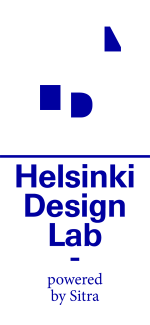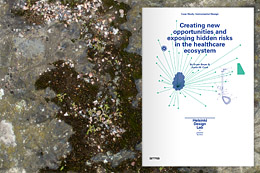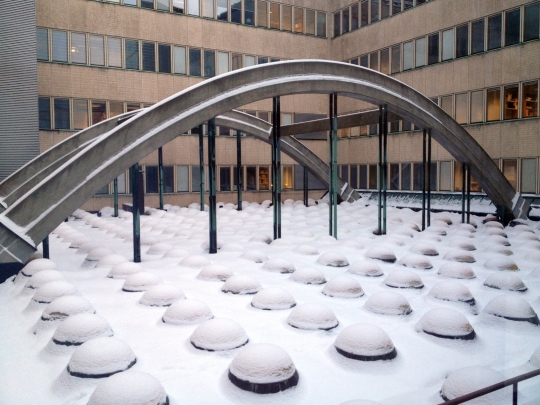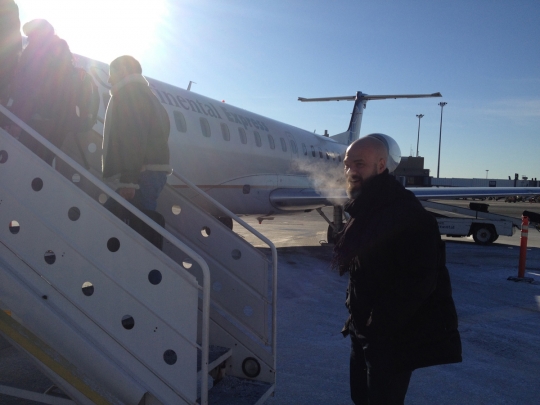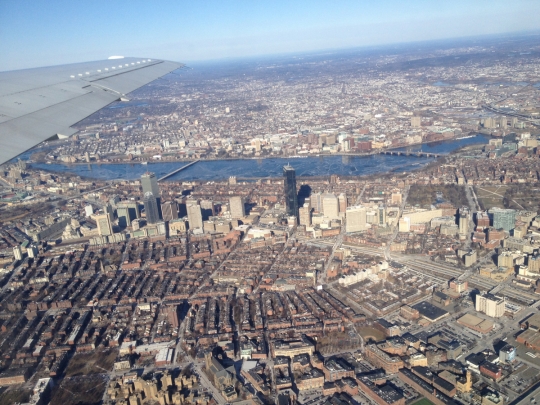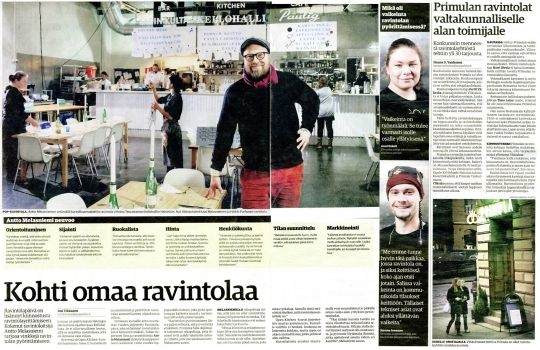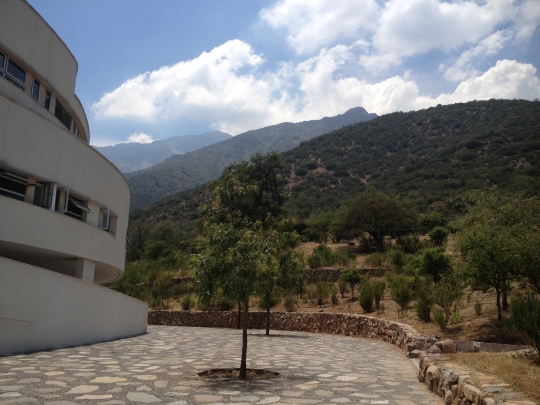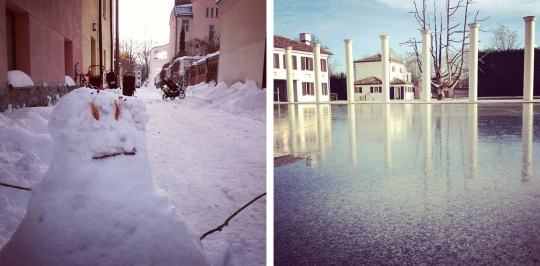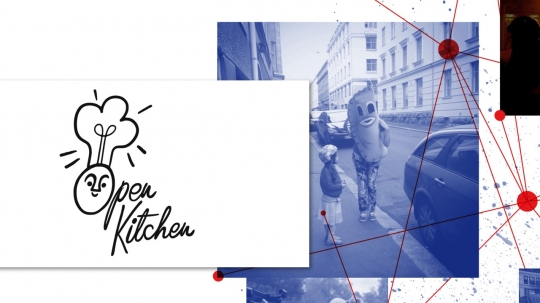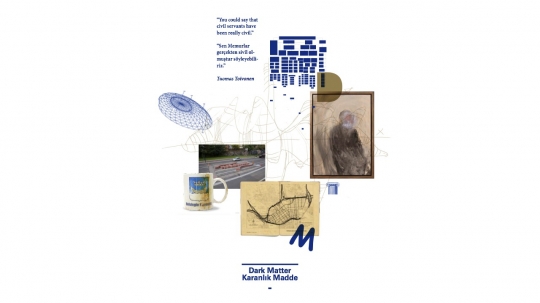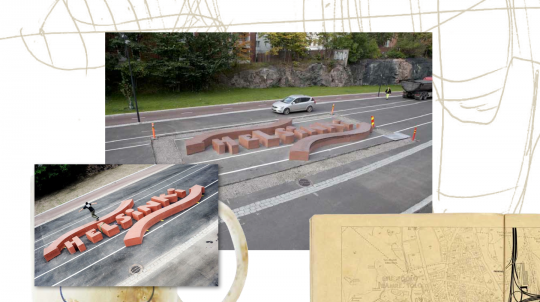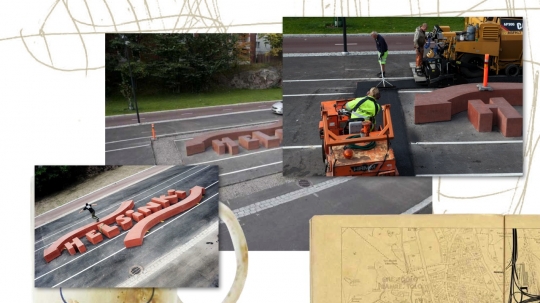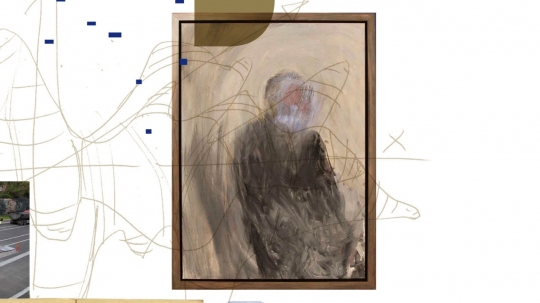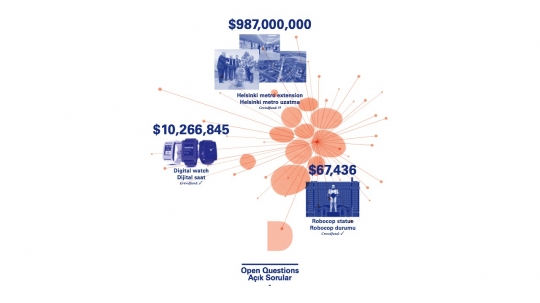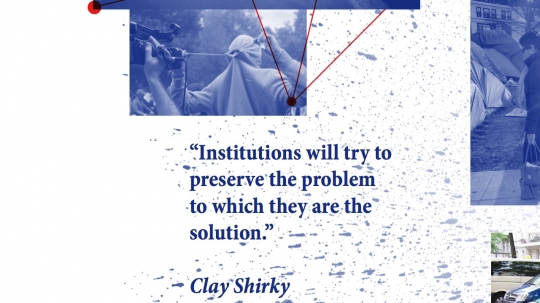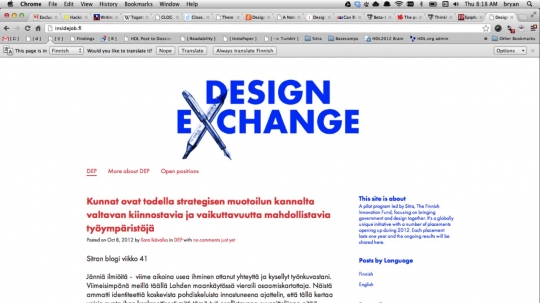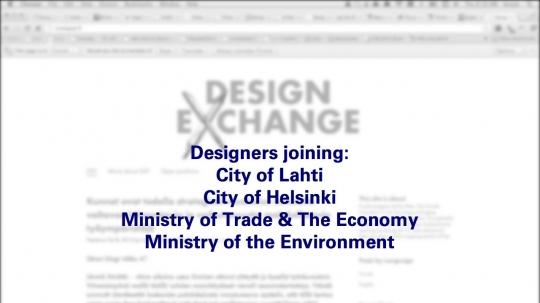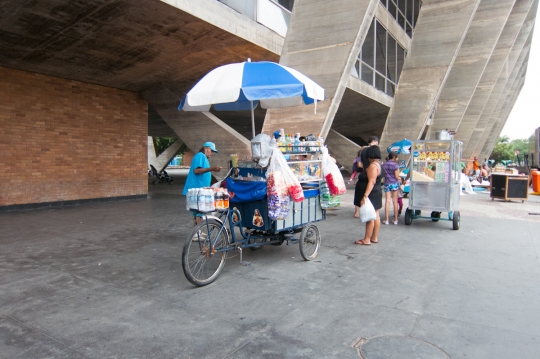Helsinki Design Lab helps government leaders see the "architecture of problems." We assist decision-makers to view challenges from a big-picture perspective, and provide guidance toward more complete solutions that consider all aspects of a problem. Our mission is to advance this way of working—we call it strategic design.
There's one thing we're not doing enough of right now and that's writing. Between Marco, Justin, and myself we have about four pieces of writing due to various groups and I think we've found just about every possible means of doing anything but writing.
Less about what needs writing and more about what has been written. Our In Studio book is now (finally!) available for sale online thanks to the MIT Press bookstore.
Marco has been in Brussels for the Commission and Sweden for the Swedish Industrial Design Association. Justin is a new father (congratulations!) so he has mostly been on parental leave, but here and there I sneak him an email as we nail down our travels for April and May. We've also had help from Fumiko Ichikawa, with whom we are putting together a workshop in Tokyo and Tim Horton, who we hope to see again in Australia. Other stops are likely to be Toronto, London, Dublin, and Dubai. But not in that order, hopefully.
And in between, lots of time on the horn to line things up for our final HDL event. We're getting close to having a complete roster for the HDL 2013 closing event on June 10th in Helsinki (sign up here to be notified when we have full details). This event will be a gradient: we'll start around 11am with talks, move to talks with drinks in the late afternoon, and end the night by 11pm in celebration mode. The talks we're lining up are a mix of people doing things similar to HDL and people whose work has inspired us. Marco, Justin, and I will probably also give a talk or two about our work, and about strategic design in general.
More than anything, we want this event to be a good excuse for strategic designers to get together because there still isn't really an event or publication that anchors this community. When we relaunched HDL four (coming on five!) years ago we wanted it to be a platform to bring together disparate but similar threads spanning multiple disciplines and geographies. Hopefully HDL 2013 does the same.
We've been taking care of infrastructure lately. Still some work to be done there, but not a ton. This means: being on the horn to convince people to help us with publications and other wrap-up related efforts; writing contracts to hire them; organizing bits of the office; catching up on email so that we're free from that nagging feeling of being behind.
The Design Exchange Programme is hitting its stride. Sara is finishing up her year-long placement in the city of Lahti where she was helping them redesign their approach to public engagement. As Sara is also having a baby (congratulations!) she will not be continuing and we're sad to see her go. Nevertheless, her story has been blogged here (mostly in Finnish) and will remain for reference. Thanks for being our first very courageous embedded designer, Sara!
Sirpa at the Ministry of Employment and Economy and Hella at the Ministry of the Environment have also been blogging actively, including short summaries in English.
We ended last week by hosting a breakfast with members of the city, Tekes, and other organizations around town to talk about the possibility of taking Open Kitchen forwards. If this works, we'll have been able to play exactly the role that Sitra is best at: develop a new concept, test it out, and pass onwards bettered by iterated findings.
I've enjoyed following along the developments of some of our participants as they take steps now towards opening their own ventures. You can follow Jerome as he mounts a sourdough bread revolution in Helsinki. If you're lucky, you'll get a chance to try his products; the bread wowed us all during Open Kitchen.
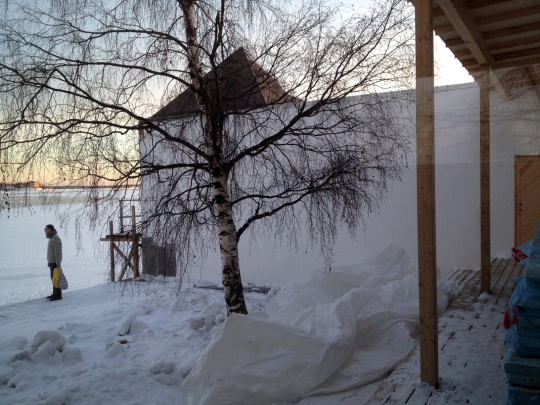
Snapshot from a visit to the Kulttuurisauna which is nearing completion.
Rory is waiting on me for final updates to the Brickstarter manuscript as I coordinate with Kali and Dan to get things just right. Meanwhile Rory is working with Bitcaves to take the manuscript forward into a book. This also serves as a reminder that I will soon need to think about revamping the Brickstarter website as we transition the active prototyping there to a project called AvoinKotka (Open Kotka).
We were very happy to see Brickstarter included in a recent issue of the magazine form, The Making of Design, with an essay by Justin McGuirk. There's also now an online video of a talk I gave at the World Design Forum in Eindhoven last autumn which discusses Brickstarter and our other projects:
Not so sure about the graphics of this video. Those are not my slides!
This week Marco is back in the office after a busy trip to the US. He and Justin were visiting the Cleveland Clinic to see an implementation the work we put together during Stroke Pathways, a research project at Harvard that served as a proving ground for our current strategic design approach. Sounds like it was an enlightening trip but I haven't had a chance to catch up with either of them for more than a minute. That's because as Marco returns I'm packing up. Tomorrow I move to New York and will be based there from February onwards as we wrap up HDL. A big change, for sure, but since we've been traveling more or less constantly for the past four years it's not going to affect our collaboration much. Though it does mean I will be waking up for some very early phone calls.
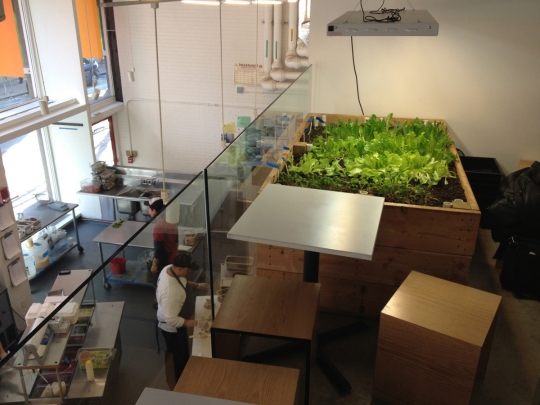
Justin and Marco visit the salad garden at Clover food lab.
While in the States Marco also had some meetings at MIT and then gave a talk at HarvardxDesign conference, which Justin and I have been advising and helping to get off the ground. Great stuff there and I swear the color similarities are just a coincidence!
We're still working through the responses to our HDL road show announcement, which means there's time for you to throw your name in the hat if you would like us to come give a talk.
Undoubtedly, readers of this blog have already read Marco's post from last week, but in case you missed it, we've recently made an announcement about the future of HDL. Hearing from the community around HDL in the wake of the announcement has been encouraging. Thanks to all of your for your continued interest in our work. I hope we are able to sustain it for the next five and a half months because we have no intention of slowing down.
On the contrary, there's still lots to do. With the ending point for HDL clearly marked on the horizon, we're entering a kind of Benjamin Button mode. We'll be getting back into the habit of writing how-tos, working from practical issues ("how to budget a project", "how to brief a photographer") through to some of the more fundamental aspects ("what abilities are needed in a design lab", "how do you pick projects"). We'll be talking through and explaining how we set up HDL so that the site becomes as useful an archive as possible for others, elsewhere looking to do something similar.
Marco and I have been spending time at the whiteboard tracing out a loose plan for the HDL closing event on June 10th. It's going to be free and open to all, so I hope you'll sign up and consider joining us. We're also keen to hear your feedback and questions about HDL and the work we've been doing. This will inform our efforts to ramp things down.
Back on the whiteboard, we've also been revisiting our proposed table of contents for the forthcoming book on stewardship as well as generally trying to get a handle on all the things we want to do before sweeping the floor and turning out the lights. Tomorrow we'll have a conference call with Justin and loop him in. This is one of the ways we usually work: a couple people bat ideas around until there's something there, then we make a little presentation to the others and start over.
Open Kitchen got a nice write-up in Kauppalehti recently. We're happy to see the Facebook group for the participants still active and are hoping to join them for a small reunion next week. Right now Mariaana, a journalist we asked to sit in on the programme, is writing up notes from each of the courses and we will be publishing those online as soon as we can. Next week we're also hosting a small gathering with some local stakeholders to see if we can find a more permanent host for the programme.
This blog post is the second of the night, behind what I just put up on the Brickstarter site. Over there we announced that Sitra will be publishing a Brickstarter book in 2013 (yup, more writing) as well as beginning a very small experimental effort with the city of Kotka in eastern Finland.
My main focus at the moment (and through much of the holiday) is getting the manuscript into shape. We're using the blog as a starting point for that, but revising and updating things with new content as well as making sure they work equally well on the page. I particularly enjoyed writing the introduction, which includes the epic battle between wind turbines and glider squirrels. You'll have to read the book to find out who wins.
We've also been working on a quick project with Two Points, the graphic designers who created the HDL visual identity. I'll leave the content of the project a surprise for now, but here's a small clip from one of the files they sent. It's part of a poster.

Next week Marco takes off on a trip to the US where he will be participating in the By Design event at Harvard. He'll also meet with some people at MIT and make a visit to the Cleveland Clinic, which is now testing some of the ideas developed during Stroke Pathways, a project that Marco led at Harvard (and Justin and I contributed to) which laid the groundwork for our strategic design approach here at Sitra and HDL. We're anxious to hear how it's going there.
On the theme of travels, we're going to make an effort to be out and about even more than usual in the coming months. If you're interested in having an HDL or strategic design perspective at an event near you, drop us a line. No promises, but we'll try our best to be accommodating.
Onwards!
In 2008 Sitra set out to build a strategic design capability. The innovation challenge at the core of its mission required the ability to design and deliver integrated solutions. Since its inception the team at Sitra has been pioneering the notion of design applied to shape the public sector.
For the past four years we've been working to develop experimental projects, as well as research, reflect upon, and articulate the practice of strategic design. In that time "strategic design" has gone from being obscure to resonating with many. Today I am writing this letter to explain why Helsinki Design Lab will close in June and what you can expect from us in the meantime.
Since its inception in 1967, Sitra has been evolving. Within the latest transition, design at Sitra is shifting from a strategic to a service role. The current members of the design team (Bryan, Justin, and myself) are committed to strategic design and will therefore pursue this interest beyond Sitra. In the spring Sitra will hire for a new role to grow service design within the organization.
One of the first things we did in building HDL in 2008 was to dig into the archives from the sixties to be inspired by the legacy of the Industrial, Environmental and Product Design conference that Sitra sponsored (HDL 1968). During the next seven months we will be converting this site into an archive of the most recent phase of HDL. The archive will be legible, free, and open.
Our intention is that the work and experience of Helsinki Design Lab be useful not just for the next phase of design at Sitra, but for the community as well—that’s you. Our model for the HDL archives will be a seed bank. We hope that you are able to take the seeds of our work forward to find new contexts and new uses.
The first thing we will do is compile our case study research from Helsinki Design Lab 2012 into a forthcoming publication on stewardship. Our tentative publication date is May 2013.
Second, we will be hosting a public event in Helsinki on June 10th, 2013. This is a true experiment, as we’ve always done smaller gatherings. If you are interested in joining us this summer please add your name to this list so that we can be in touch as plans develop. The event will be free to attend, but you’ll have to cover your own expenses.
Our objective is to provide a platform for the strategic design community to share experiences, and we’re particularly interested in design as a driver for innovation in the public sector. We will focus on three specific audiences:
- Educators: how do we educate strategic designers?
- Practitioners: how do we increase the supply of practices capable of providing strategic design services?
- Commissioners: how can governments and foundations commission strategic design?
These themes are drawn from the questions and inquiries we have fielded over the years. During April and May of this year we intend to be on the road, meeting with you, giving public talks, hosting workshops, and making ourselves available to share the work of HDL. If you are interested in hosting us, please send a note here. Our resources are limited, but we will use your feedback to craft our itinerary.
We are also interested in the questions that you may have about HDL, our projects, and/or strategic design. If we get a critical mass of questions, we'll construct an extended FAQ. Your contributions are essential for this. Please visit this page to leave your feedback.
From July 1, 2013 the HDL website will go into hibernation mode. All of the content will remain available but weeknotes will cease and there will not be anyone responding to emails.
Undoubtedly this will be a surprise to some, but rest assured that the team is as committed as ever and we're looking forward to a very busy next few months. To some, closing may be interpreted as failure, but to us it's the realization that HDL has accomplished what it set out to do: to demonstrate that design can play a valuable part of strategic decision making, to grow a community around this practice, and to advance the discourse. As all good undertakings come to an end, they invariably make room for newer and better things. The next steps we all take together.
Sincerely,

In another window I'm working on a draft of the feedback form we will send to the 12 Open Kitchen participants. That makes this weeknote a procrastination technique. Again.
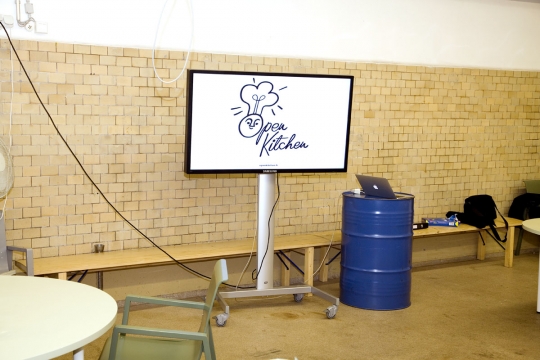
A snapshot from the opening of Open Kitchen. And a bunch more photos below. Photo: Matti Tanskanen
We've been heads down these last three weeks.
Maija and I are working on a publication to wrap-up the work on Brickstarter. Sitra's not in a position to build the whole platform ourselves at the moment (though we are probably building a nano-micro-proto), so we're transferring our momentum there into a publication that coalesces three things: urbanism, governance, and emergent initiatives (or perhaps Peer Progressivism?). The goal of the publication is to simmer down our blog a bit and prepare a limited primer on these issues that will hopefully benefit anyone interested in building a platform to support bottom-up urbanism, and perhaps people who are using such platforms to build the city.
A recent call with Dan Parham, co-founder of Neighborland, helped clarify my thinking around the next steps for Brickstarter. As Dan Hill and I have always tried to emphasize when showing the Brickstarter mockups, the ideas are not the hard part necessarily, so I've been a bit embarrassed by the press our project has received because the attention should really be directed to Neighborland and others who are putting the ideas into practice.
Since we don't have a live platform we haven't been prototyping with users, but we have been prototyping with another group: civil servants. The reason we jumped right to high resolution mockups is so that they're plausible, and perhaps even a little scary, when we show them to our colleagues in city hall and elsewhere. Part of our challenge has been to find a language and a narrative that helps the public sector recognize the potential "threat" of citizen-initiated urbanism, and in doing so help them lean into it, rather than shy away. Because, of course, it's not a threat at all—quite the opposite. We're getting close to having an agreement with a town in eastern Finland to put a subset of the Brickstarter ideas into practice.
After talking with Dan, I'm retooling my thinking on the publication a bit and focusing more on how our work might offer a language and narrative that helps others build the connective tissue between government, citizen groups, and the technologists who build collaboration platforms. If we can do that, I would be very happy.
We've brought in Rory Hyde to help us as an editor for the Brickstarter wrap-up. It's great to have him, not only because his own work on unsolicited architecture overlaps with Brickstarter, but because he also brings structure to our work. Thanks to Rory's careful work on the table of contents and overall structure I'm now hyper conscious of the fact that our introduction is 35% too long. Time to lose 1000 words. This is my favorite part (really).
Maija's working on some text to summarize the Fact Cards, as well as a set of diagrams that map them out relative to each other. We'll crunch on this right up till the end of the year, but I'm resolved to have the final draft of the manuscript done by the new year.
Marco was in Chile to give a talk at the Architecture Biennale there, and a number of other things. He reports back that it's an exciting moment in Chile, but then again readers of this blog know that we're fans of the strategic design work happening in that country.

Marco was quite happy about summer in December.
Justin was in town for a week, wherein he and Marco spent a good portion of it sequestered in a conference room hashing out a publication on Low2No. With that project transitioning to our market partners VVO and SRV this is a good moment to step back and reflect on what we've learned. That's the gist of the book, but I'll let Justin introduce it more properly when things are more fixed.
Somehow without trying to we've become a publications house. I'm glad that words are a renewable resource, or we might be in danger of using them all up.
Open Kitchen launched on December 3rd, but I think it's best to start with this, a new video that Kalle and I finished to coincide with the launch:
The Facebook page for the project is the best place to get a sense of how things have been going. Our participants spent about 1.5 weeks learning from experienced food entrepreneurs around the city, then the second 1.5 weeks have been dedicated to figuring our a shared restaurant concept and putting that into motion. Last night I had my second meal at Open Kitchen and it was—forgive me for bragging on behalf of the group—excellent! I'm really proud of what the participants have put together.
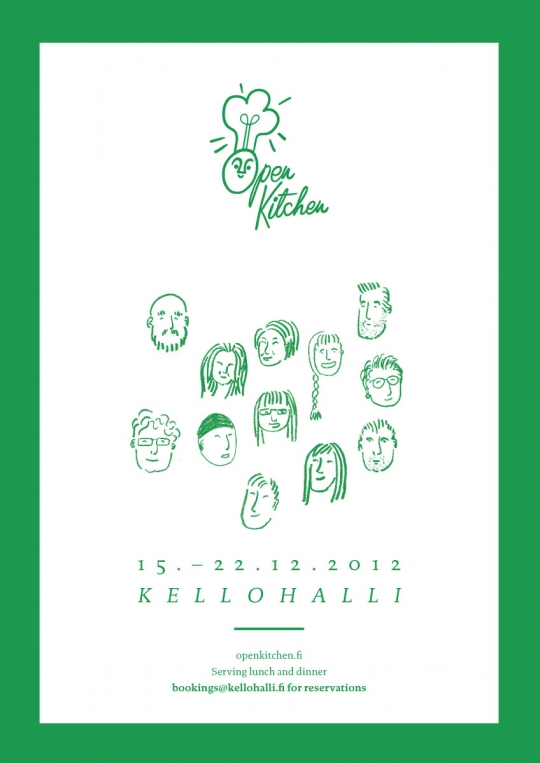
Inka Kosonen and Mari Sollman, two Aalto University Masters students, have been working with the team to create and execute a visual identity for the materials and interior at Open Kitchen… all in 3 days.
With things running more or less smoothly, we're now turing our focus to next steps for the programme. In January we'll be hosting some sessions to see if we can match the programme with a funder who would be interested in taking it forward on an ongoing basis. From this perspective, we've treated Open Kitchen as a mechanism to produce evidence. It is testing the viability and usefulness of a 3 week course as well as proving the market for such a thing. Sitra has taken the upfront risk in hopes that we will find a partner to carry it forward. That's always easier with even a modicum of evidence.
There will be more to say, but for now I'm going to end this post with some photos that document the first 2 weeks of Open Kitchen.

Tuuli Kaskinen of Demos Helsinki talking about food sustainability.
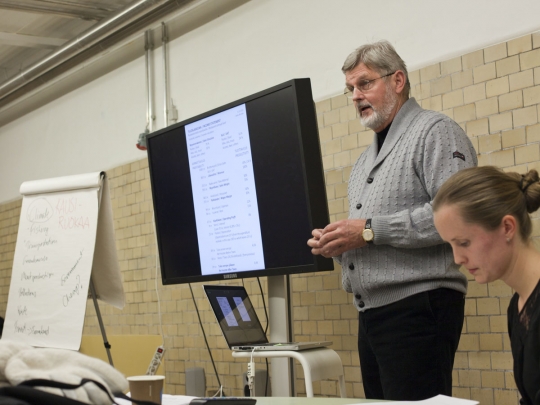
Aimo opened his first restaurant for the Olympics in 1952.

Cynthia Shanmugalingam of Kitchenette talks about food trends in London. Photo: Matti Tanskanen
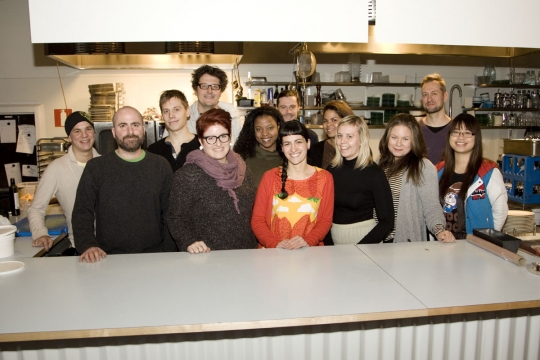
The team! Photo: Matti Tanskanen
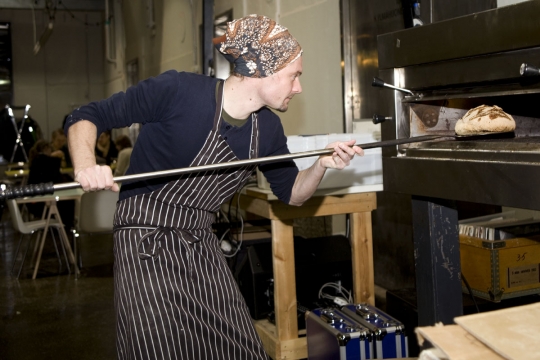
Jérôme putting bread in the oven. Photo: Matti Tanskanen
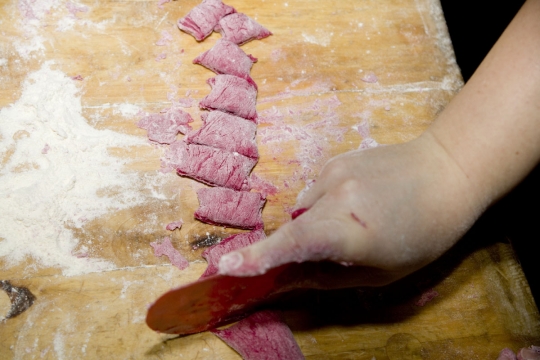
Beetroot gnocchi in the making. Photo: Matti Tanskanen
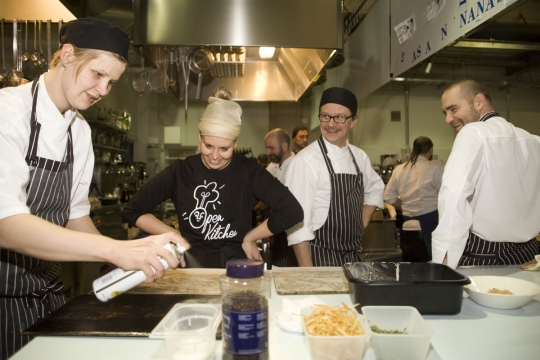
Saila working with the Marrot team in the kitchen. Photo: Matti Tanskanen
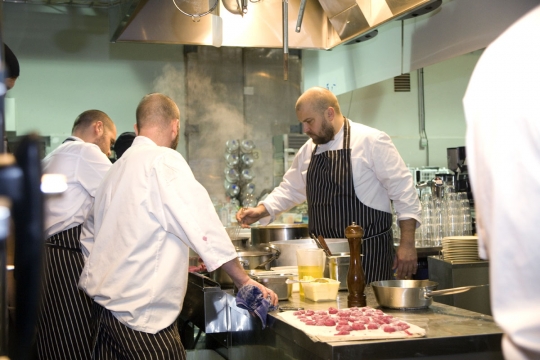
Antto doing this thing. Photo: Matti Tanskanen

A simple, pleasant nordic interior. Photo: Matti Tanskanen
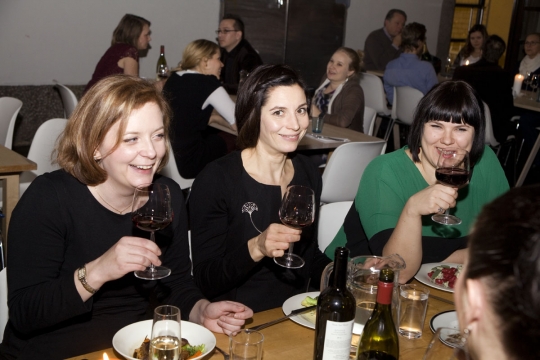
Happy customers! Photo: Matti Tanskanen
Between all of this, Marco, Justin, and I have been finalizing the goals for HDL 2013. I think we have a shared understanding of the goals now, but more on that in the new year.
As Bryan has already noted, a month ago I left Sitra, left Helsinki and moved to Italy, where I’m the now the CEO of Fabrica, a communications research centre and trandisciplinary studio. (You can read about that here.) Back in Helsinki for the weekend, having left a lush autumnal Veneto on Thursday, I’m posting this from a city that is now −5 and deep under snow.
I leave with mixed feelings: I could not be more excited about the new role at Fabrica, and equally I’m very proud of the projects that we created or developed here—Brickstarter, Open Kitchen, Design Exchange, Low2No and Helsinki Design Lab—and yet, as well as missing Helsinki, I also feel a loss that I’m not able to help take those projects forward.
This last aspect is clearly not important to anyone else, though; what is important are that the projects do have lots of life left within them, numerous unexplored avenues, and that they are taken forward in different contexts, tested under different conditions, by people more than capable of doing so. And that includes you, reader.
For instance, we often get emails asking us if Brickstarter is launching near them; we reply that they can take it! All Brickstarter is, essentially, is a tool to crack open discussions with government, and in public, constructed by taking the existing tropes of social media and crowdfunding and throwing them at spaces, communities and governance. It’s a sketch, and as such can be reinterpreted by others. There is no unique IP there as such—Sitra is a public body—and our “legible practice” approach is intended to enable you to take what we produce and deploy it elsewhere. Equally, there is no particular magic there. Again, it’s taking off-the-shelf cultural artefacts—social media—and deploying them in a slightly different context to their usual mise-en-scene.
The issue is in how you do it, who is doing it. That is what holds governments back usually, as there is barely a government, at city or state level, anywhere in the world who has the right people in the right place. In the particular case of Brickstarter, that means coders, designers, community managers, organisational entrepreneurs in strategic positions at the heart of government. Those things are usually treated as services to be bought in from outside and frankly, by people who don’t know what they’re buying.
However, there are a few honourable exceptions to this emerging, which is very encouraging. Those people have no need of Brickstarter and Open Kitchen, as they will already have a hunch as to what to do and how to do it. That could be you.
We’ve been so open and precise about the development of Brickstarter that it has often confused. Again, it is a sketch, and a conversation. To make that meaningful, we had to detail everything, to think it out loud, as it were. Thus, people thought it was a real live service—some people who can only see things through the lens of “hot new startups” and then wondered as to why we were blogging about other urban crowdfunding services (“Were those not competitors?”)
No, it was research, and designing a real(ish) website was also research, but research that is intended to affect. As we’ve written elsewhere, only by making do you genuinely influence—as it forces you to make meaningful decisions, as well as making abstract concepts tangible and legible —and I hope we made just enough to help bend the debate in a productive direction, just a notch. One of our core points to get across is that the ability to design a convincing looking website relatively rapidly, as well as a clickable prototype front-end, is not confined to Californian start-ups. In fact, it’s perfectly possible to pull it off in a relatively slow-moving, relatively bureaucratic public body in a welfare state. (The UK’s Government Digital Service is doing this for real, of course.)
We often quote Joi Ito, as a) he’s very smart, and b) so damn quotable! But here I might quote his predecessor at MIT, Nicholas Negroponte in Wired UK last month, found in a great piece about Ito.
“Start-ups are perforce small—you’ve got to focus, the blinders get narrower. By definition it’s not big thinking.”
I find that an interesting, subtle critique, and in getting Sitra, an institution—in an age when institutions are permanently under the cosh—to borrow a little from start-up culture without losing its institutional status and capacity, we might actually shoot for an interesting space in the middle, something other than the hegemonic start-up, if I read between Negroponte’s lines. With the ability to move quickly and prototype, yet retaining “big thinking”, systemic change.
Anyway. This approach to legibility—to thinking out loud through communicable means, in public—means that we can at least move on, and the projects live on. Brickstarter, in appearing in Steven Johnson’s latest amongst numerous other places, has already help move the conversation on in practical terms, we think. And I’ll continue the themes we started here in my new role at Fabrica, just as the others will too.
Watch out also for Open Kitchen, which we’ve published less about, mainly due to the fact that this is more of a real partnership. But if Brickstarter is largely applied research and discussion starter, trying to affect a culture, Open Kitchen is real live service deployed into the real live city, also trying to nudge the city's food culture forward. Watching the videos of the applicants to Open Kitchen was actually rather moving—that feeling you get when a hunch becomes a project, and then people adopt that project with gusto, and fill it with their own lives, enthusiasms, energy and spirit.
Open Kitchen is running now, and I’m sure it will be reported on thoroughly here and elsewhere. But that too is a project I’m proud of, which has filled much of the last year. It’s been hugely rewarding to move a project that started as a food truck concept for Low2No, via research, writing, teaching, drawing and self-publishing, into some kind of “HEL YES’s Kitchen”, a food start-up incubator running in the renovated abbatoir in Kalasatama, and subtly aimed at building a new user-centred interface onto the City of Helsinki. Many thanks to Ville Relander from City of Helsinki, Antto Melasniemi and Elina Forss, for this one. It’s been a blast.
The broader strategic design practice will move forward too. When we held HDL 2012 a couple of months ago, we were lucky enough to bring together a group of people to unpack various approaches to strategic design. It was heartening to see the emerging community around this work; although the work is still at the edges, it’s building momentum and a faint network of lines is being traced across the map.
For instance, on hearing my news Justin McGuirk remarked to me that it was a shame he can no longer say, “At least the Finns get it!” (Justin had written about our work a couple of times in The Guardian.) I told him that he still can say that, but also that he can also say the Danes get it (at Mindlab), the Americans get it (via IDEO, Brownsville Partnership, Local Projects and others), the Chileans get it (via Elemental, Tironi et al), the Brits are beginning to get it (at Nesta, Government Digital Services and elsewhere) and the Canadians and the Australians are now getting it too, with similar operations emerging in those very different corners of the globe. We’ve sometimes helped shape them a little, based on our Finnish experience and through hosting the network occasionally, just as others have, but most of this—and in particular the hard graft of getting it done in their particular cultures—is all their own work. That is also heartening.
All these—and more we don’t know about—are deploying design in new ways, in various modes and alongside other approaches, to help shape public decision-making and rethink more resilient public sectors. I think the work we’ve done here has helped push this mission along, and I’m proud of what we got done in my couple of years here, as a small part of the longer project by my colleagues, which still continues.
Huge thanks to the team—Anna, Bryan, Justin and Marco, and our great interns Kalle and Maija—as well as those other teams at Sitra I’ve worked with, and all our external partners—hello Antto, Elina and various Villes!, and the various ministries and government departments on Design Exchange, partners on Low2No—as well as our supporters in Helsinki and elsewhere.
Kiitos, moi moi.
Talking to students recently I was asked "what do you really do?" A lot of the work is setting conditions and context so that people can do their thing. Most often this means getting contracts right so that collaborations can set off without friction. Briefings are also of critical importance.
Another big part of what our team does is give expression to things that are otherwise invisible. We do this so that these unseen aspects can become part of our conscious decision-making, and so we can tell stories that help others broaden their decision-making.
Showing our work is not always easy, or at least not in a way that makes it interesting. What we do usually invovles people sitting in a room talking. Sometimes they stand up. Occasionally they scribble things on a whiteboard. So how do you show this in a compelling way—in a way that someone who wasn't there might actually want to pay attention to, and might actually glean something from?
In the spirit of legible practice below you will find the briefing that we sent to the photographer before HDL 2012. To see the outcomes of this brief interpeted by Johannes Romppanen a skillful photographer, you can check our gallery on Flickr or check here.
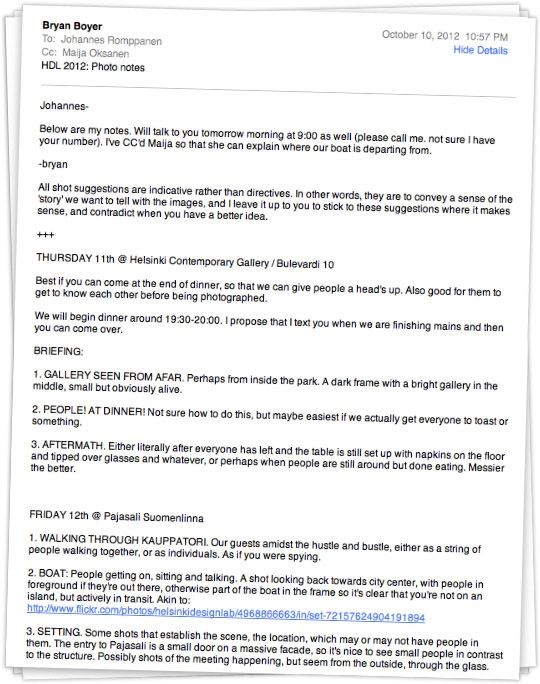
All shot suggestions are indicative rather than directives. In other words, they are to convey a sense of the 'story' we want to tell with the images, and I leave it up to you to stick to these suggestions where it makes sense, and contradict when you have a better idea.
+++
THURSDAY 11th @ Helsinki Contemporary Gallery / Bulevardi 10
Best if you can come at the end of dinner, so that we can give people a head's up. Also good for them to get to know each other before being photographed.
We will begin dinner around 19:30-20:00. I propose that I text you when we are finishing mains and then you can come over.
1. GALLERY SEEN FROM AFAR. Perhaps from inside the park. A dark frame with a bright gallery in the middle, small but obviously alive.
2. PEOPLE! AT DINNER! Not sure how to do this, but maybe easiest if we actually get everyone to toast or something.
3. AFTERMATH. Either literally after everyone has left and the table is still set up with napkins on the floor and tipped over glasses and whatever, or perhaps when people are still around but done eating. Messier the better.
FRIDAY 12th @ Pajasali Suomenlinna
1. WALKING THROUGH KAUPPATORI. Our guests amidst the hustle and bustle, either as a string of people walking together, or as individuals. As if you were spying.
2. BOAT: People getting on, sitting and talking. A shot looking back towards city center, with people in foreground if they're out there, otherwise part of the boat in the frame so it's clear that you're not on an island, but actively in transit. Akin to:
http://www.flickr.com/photos/helsinkidesignlab/4968866663/in/set-72157624904191894
3. SETTING. Some shots that establish the scene, the location, which may or may not have people in them. The entry to Pajasali is a small door on a massive facade, so it's nice to see small people in contrast to the structure. Possibly shots of the meeting happening, but seem from the outside, through the glass.
4. EVENT: Probably best if you sit for a while without taking any photos to let people get used to you being there. But use your judgement. No special directives here, but some shots of people discussing.
5. RING OF CHAIRS. We will have the chairs in a circle. Try to get a shot with the whole ring visible. Otherwise, please grab a series of shots that we can stitch together (I can do it so you're not bothered). This is a theme from last time:
http://www.flickr.com/photos/helsinkidesignlab/4970979696/in/set-72157624904191894/
6. PEOPLE STEALING A MOMENT AWAY: as individuals, pairs, or small groups, people will inevitably sneak away from the main part of the group to discuss something, have a phone call, etc. These are nice moment because they show a bit of humanity. The event is not consuming them. Example: http://www.archdaily.com/141823/mckinsey-company-hong-kong-office-oma/_mg_0127/
7. PROGRAMME BOOKLET: A shot of the book (ideally cover visible) in someone's hand, or just sitting somewhere. But an image of the book. Example: http://www.flickr.com/photos/helsinkidesignlab/6205412773/in/photostream
8. FOOD: food is very important to us because it's a natural opportunity to talk to new people, or change the conversation. So somehow to show that while people are eating, or grabbing food, they are also still "working".
+++
In 1968 Sitra had a design event on Suomenlinna, so this is a bit of a homecoming. Here are the photos from that. They're pretty amazing.
Photos from a previous event that we like:
http://www.flickr.com/photos/helsinkidesignlab/4968872519/in/set-72157624904191894
http://www.flickr.com/photos/helsinkidesignlab/4968684851/in/set-72157624904191894
http://www.flickr.com/photos/helsinkidesignlab/4969305960/in/set-72157624904191894
http://www.flickr.com/photos/helsinkidesignlab/4968855619/in/set-72157624904191894
http://www.flickr.com/photos/helsinkidesignlab/4970368253/in/set-72157624904191894/
http://www.flickr.com/photos/helsinkidesignlab/5032513281/in/set-72157624904191894
http://www.flickr.com/photos/helsinkidesignlab/5032520997/in/set-72157624904191894
http://www.flickr.com/photos/helsinkidesignlab/5033150866/in/set-72157624904191894
http://www.flickr.com/photos/helsinkidesignlab/5032536739/in/set-72157624904191894
http://www.flickr.com/photos/helsinkidesignlab/5032533765/in/set-72157624904191894
And something random but nice:
http://www.kinfolkmag.com/storage/journal/091912foodrenaissance/food-renaissance-2.jpg
In the grand scheme of our work, photography briefings are not among the most critical things that we do. But given that this was sitting in my email and it might be of use to someone somewhere I figured, why not, let's see what the internet finds to do with this.
Note: Lately I've been returning to the habit of writing prepared remarks in an effort to stick to the strict time limits of various events. As an added bonus, this means I end up with a transcript that can be posted with relative ease. Below is one such example, originally presented at the World Design Forum (previously mentioned here) on October 19th in Eindhoven and curated by the indefatigable intellect of John Thackara. Attentive readers will notice that the starting point shares something with an earlier post, but it quickly diverges. And so...
I'm an optimistic enough to believe that humanity will find a way to weather the immense and multiple crises that are mounting today. I'm less optimistic for our institutions, however, and this is why I've chosen to practice design inside a government agency. I believe that our institutions are outdated technology and that the tools and attitudes of design are part of the fix.
At Sitra we've been testing this notion since 2009 with Helsinki Design Lab. We have projects at different scales, from 10s of thousands of euros to tens of millions.
On the small end, that includes projects like Open Kitchen, which is a bootcamp for food entrepreneurs. We've had an explosion of pop-ups thanks to Restaurant Day, a festival that happens 4 times a year which you can see an image of here.
But what pops up inevitably pops down. Open Kitchen is designed to fill a missing rung on the ladder of innovation. In doing so we hope to help restauranteurs move from pop-up to permanence. This is important because we want to combine the faster cycle speed of pop-up innovation with the reliability of everyday businesses.
On the bigger end of the spectrum, we do things like Low2No, a sustainable urban development project that looks like a block of 5 buildings, but it's actually a vehicle to work with the ministries, the city, and private developers to create climate friendly regulations and business models. We use the messy reality and imperative of the construction project to bring urgency to regulatory change.
One early success has been a change to the fire codes to make it legal to build large buildings out of timber—something we had never expected when we began but discovered and acted on along the way. We call it a success because 4 other timber buildings have been announced since the change, so this is early but important evidence of scale.
What links both of these is an interest in using tangible projects to help organizations, as Jan Van Der Kruis noted earlier, to "witness change."
We have not designed roads to have traffic jams, hospitals to have queues, services to remove personal agency, and tax forms to be confusing. Institutions and their procedures can appear immutable and static, but they are nothing more than an accumulation of human choices. We can make difference choices today, and have different institutions tomorrow.
To do so, we need to develop ways to grapple with something that Dutch architectural historian Wouter Vanstiphout calls "Dark Matter". It's a metaphor for the complexity of institutions: all of the invisible things like incentives, pay grades, organizational culture, and other issues that nevertheless shape an institution's interactions, behavior, and output.
Dark matter is not a barrier because it's massive or negative. Rather it impedes change because it is inscrutable and opaque. We use our projects to help us find the texture and grain of dark matter, and in doing so find specific opportunities for change at the systemic level.
Let me switch now and share a bit of recent history in Helsinki, which nicely explains the imperative for another of our projects.
This is part of a cargo freight line in Helsinki that was renovated into a recreational path earlier this year. It was designed for skaters and it opened on June 12th. Exactly 3 months after it opened, the city of Helsinki came back and vandalized their own work by digging a moat around it to prevent skating. This was done in response to complaints by citizens who live nearby.
One week later, on September 17th, the city came back and filled in their moat after other citizens complained about losing the skate park. By the way, the original project passed through all of the required due process. The city built the thing, defaced it, then restored it, all within a span of four months.
Why?
Because the city was responsive to its citizens —and quickly! But responding in a series of transactions is not the same as fostering an inclusive debate about how we want to live together. Technocratic silos can only respond with technocratic answers. Why not a sign with hours, for instance? Because public works only have trucks and shovels!
Ascriptions of incompetence would be too easy, too simplictic. Instead we find that the institution itself is not in a fair fight with today's society. We are connected through fast and agile networks. We expect engagement from those we take the time to interact with. We want to contribute, not just receive.
But our institutions are without inboxes. In most western countries we have a democratic right to say NOT IN MY BACKYARD, but how easy is it to say YES?
In Helsinki this dynamic is summed up rather poetically in the official portrait of a recent Director of City Works, seen here, seemingly without a face. One wonders if the metaphor was lost on them. And although this is from Helsinki, it's a useful emblem for many institutions in many places, I would guess.
At the same moment we see experiments on the fringe. Crowdfunding websites are providing an alternative for citizens to financially say YES IN MY BACK YARD. This potentially solves a funding problem but it skips questions of democratic process, of debate. One of the first spatial projects on the US crowdfunding site Kickstater was a robocop statue for Detroit. While I happen to like the project, who am I, living in Helsinki, to say that this is what Detroit needs? The local and the global collide in this example with no clear answers just yet. We will have to design one together.
The cost of interacting with institutions is so high that citizens increasingly prefer to accept the risks of self-organization. As our culture changes, the public sector will continue to find itself subject to competition in ways that it's not used to. Restaurant day, which I showed earlier, was organized on Facebook … inspired by the difficulty of the city's own formal permit procedures. This is an unexpected, asymmetric competition to be sure!
If we expect our municipalities and our ministries to behave differently, they will need new capacities as well.
In the Design Exchange we help governments recruit and host designers as part of existing project teams. In other words, we help government change its people, and therefore its tools. These individuals are employees, not contractors. They're part of the fabric of the organization.
By being on the inside, they are better positioned to help frame questions in a holistic way from the beginning. This happens both by bringing a human-centered perspective; by enabling new forms of more fluid communications between institutions and citizens; and by making co-creation with citizens a basic tool, rather than an exceptional one.
Rosanne Haggerty, who runs an NGO in the US aimed at ending homelessness, once told me that "people have a hard time accepting failure unless they also see a solution." With these projects we're attempting to manifest solutions promising enough that they help us engage the failures of the status quo.
Thinking about it today, our hypothesis with the Design Exchange and the other projects is that by jumping straight to possible solutions, and by doing that close to government, we can begin to have a more articulate conversation about how we will redesign our institutions from the inside out.
Thank you.
Ten thousand meters over Trondheim and everything is a luminous black. The only light visible is an icy blue dot, steadily blinking on the wingtip of this Airbus A330. So yes, another flight. I'm on my way back from Helsinki after almost three weeks on the road in Canada, the US, and Brazil.
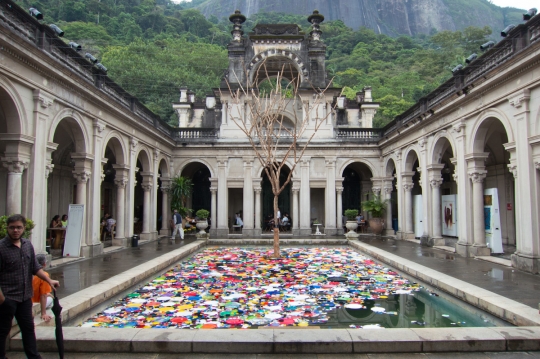
The photos in this post are snapshots from Rio, where I was giving a talk at the Creativity World Biennale...
While I've been giving talks in what seems like just about everywhere, Justin, Marco, Kalle, Maija, and Anna have been more than earning their living by keeping the projects on track.
On the top of our minds right now is Open Kitchen. We've been finalizing the roster of speakers, writing assignments, and briefing speakers. The first item has proven to be a little tricker than we anticipated and so we are finishing things at the last minute. All of the contributors to the programme are people who have a wealth of practical experience and are active entrepreneurs, regulators, restauranteurs, designers, right now. While this is great in terms of the experience they bring to the sessions, it also means that peoples' schedules are harder to contend with. Our neat and clean thematics for each day of the programme have become slightly less crisp in the transition from top-down planning to emergent reality. We made the explicit choice to favor quality of content over ease of scheduling, though, so this is what we get!
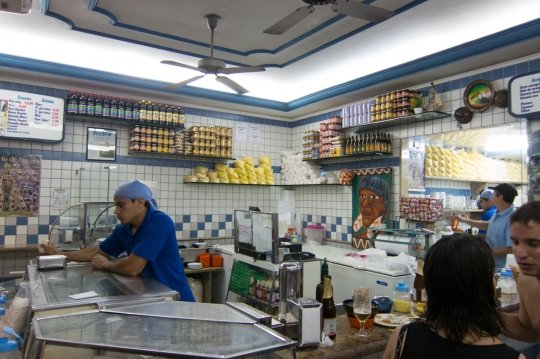
Of course I took the opportunity to check out local street food and other eats. Açai remains my favorite snack in Brazil.
We're also excited to have selected two Aalto University students who will work with the Open Kitchen participants to design their collaborative restaurant. It's going to be a barnstorm—they will have two days to do everything from menus to interiors—but the pair are talented so I think we'll see good things from them.
Marco had a busy day yesterday. He started the morning with an appearance on MTV3'sHuomenta Suomi (Good Morning, Finland) show to discuss the World Design Capital and then spent the day in Finlandia House MC'ing the closing event of the WDC. Lots of familiar faces were in town for that, so I'm especially disappointed to have missed it.
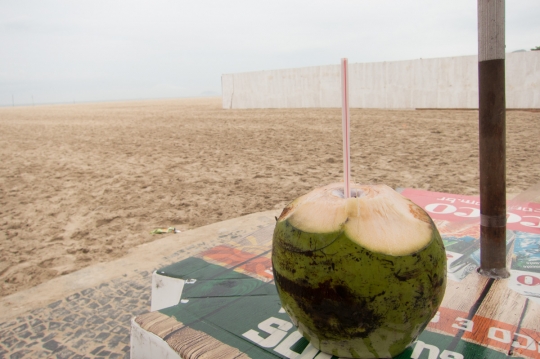
The coconuts were not too bad either.
Maija and Erkki have been in eastern Finland meeting with a town there about the possibility of doing a sort of micro-Brickstarter prototype. I happened to run into Candy Chang, a friend and former neighbor, while I was in Rio de Janeiro, and we were able to share notes. She is part of the team behind Neighborland. Meanwhile, we are pushing ahead with a reflective summary and wrap-up of our research in this area. I'm rather behind on some writing for the site. That's likely to be part of my weekend.
Jaana, our embedded designer in the City of Helsinki Social Services dept, is off to the races with the redesign of the website and access channels for their in-home family care services. We should have something to show there by the end of the year, but no promises just yet. It's about to be pikku juolu (lit. "little christmas") season in Finland and that always seems to stretch timelines.
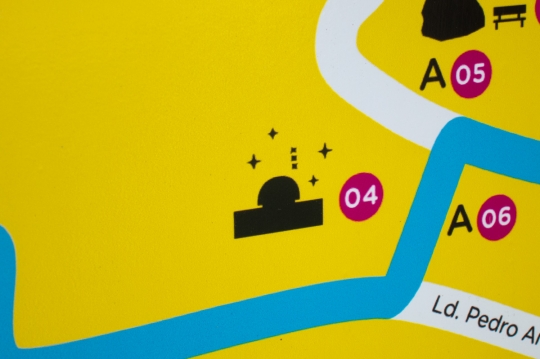
An excellent icon for one of the local observatories.
As a last thought before dutifully stowing my laptop and preparing for landing, I'm grateful to the many people I had the pleasure of meeting across Canada recently thanks to my trip there hosted by Social Innovation Generation. Nate Archer, Cameron Norman, Geraldine Cahill of MaRS, and ISIS at the Sauder School of Business in Vancouver took the time to blog about my various talks there.
And there's the red light and the reliable bing-bong of the landing preparation ritual.
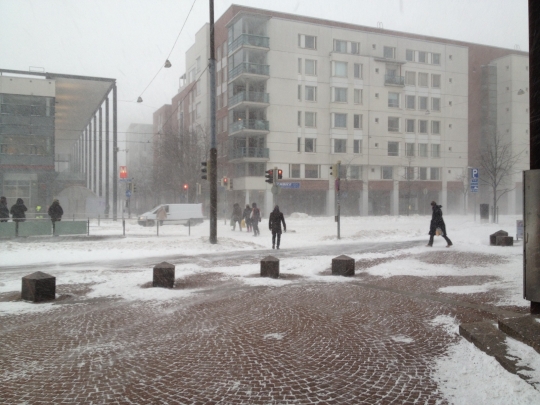
This is the scene from the office, after landing. Quite the contrast.
Jesper Christiansen of MindLab and Laura Bunt of Nesta recently published an excellent paper entitled Innovation in Policy: allowing for creativity, social complexity, and uncertainty in public governance. I enjoyed reading a draft of the paper and acting as a respondent, both through a chain of emails as well as offering some remarks at a small seminar held at MindLab in Copenhagen. For more background on the paper, Laura's blog post is also relevant.

My full remarks are available on the MindLab blog. But to spark your interest, I'll give you a taste that ends with a riddle:
I agree that we are beset by crises, but I’m optimistic enough to expect that humanity will weather them relatively unscathed as individuals, families, and communities. The question is whether our institutions will be as lucky.
I’d like to begin with a riddle. What binds together the following…?
- A pop-up restaurant
- A Private school
- A Riot
- An Email
To find out, hop over to the MindLab blog!
